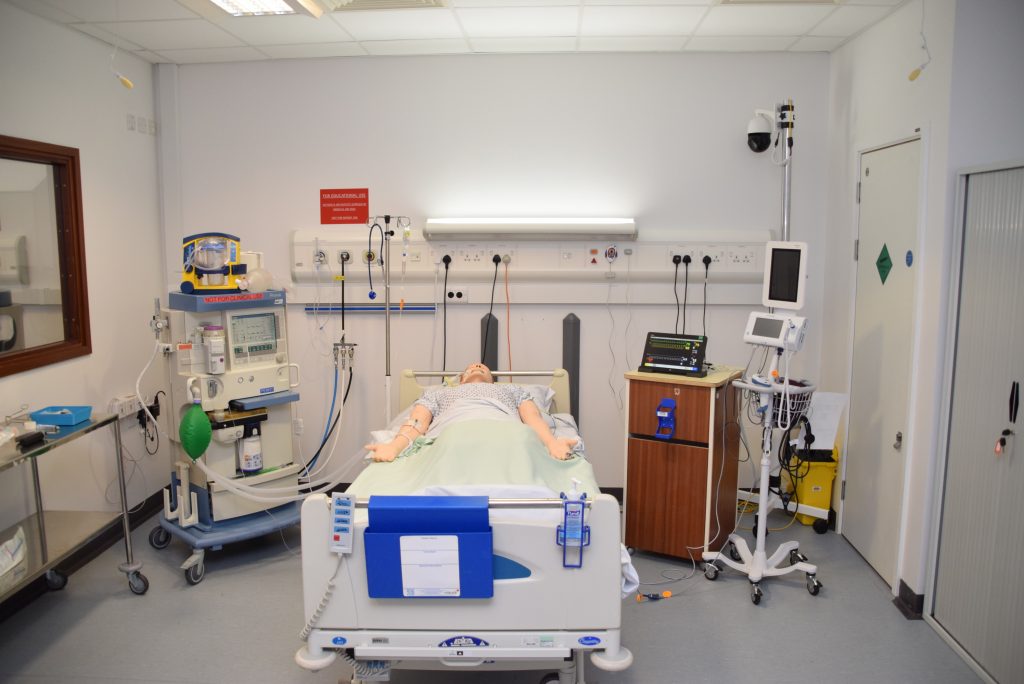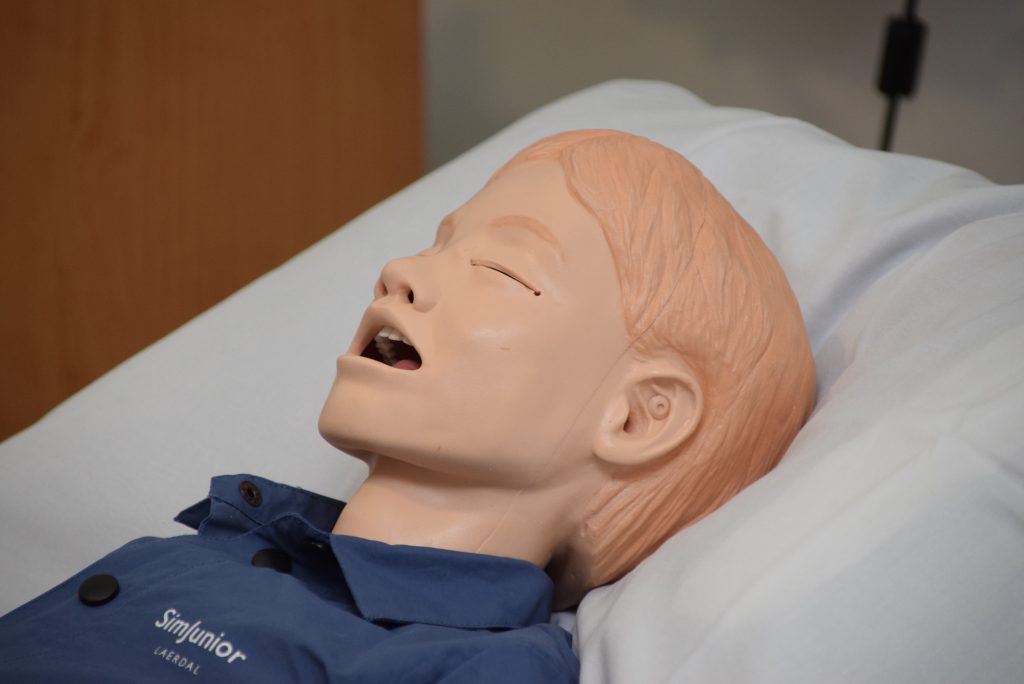The North East’s latest NHS centre for simulation training and education officially opened at Newcastle’s Royal Victoria Infirmary today.
Unveiled by Professor Sir John Burn, Chairman of the Newcastle Hospitals NHS, the SIM centre is a purpose built, simulation facility at the heart of an ‘Outstanding’, multi professional education and training skills centre.
Specially designed to recreate clinical environments, it allows staff to put their theoretical knowledge to the test by being placed in the heart of true to life healthcare situations, in a safe and controlled environment.

Simulation is integral to staff training and development
“As rapid advances are made every day in healthcare, access to simulation-based training has become integral to our staff training and development,” explained Jan Charlton the Trust’s Simulation Lead.
“This new SIM centre and mobile simulation equipment builds on our expertise as a leading training and development centre for the region, allowing our staff and healthcare professionals from across the region to gain invaluable skills and experience in a range of interactive situations, both clinical and non-clinical.
Jan added: “It helps them to focus – to rehearse and refine their skills, and be ready to truly put patients at the heart of everything they do when delivering high quality care in our outstanding clinical environments.”
The Head of Education, and Workforce and Development says: “Our courses support development of highly performing teams, greatly enhancing patient safety through a human factors’ perspective, encouraging effective communication and decision making through greater awareness and clear leadership.
“This is particularly important in emergency and other difficult situations as it helps staff to think about how they behave and communicate with each other, and as important with patients and families who may be confused and distressed.”
Bespoke training scenarios
The centre itself comprises of two clinical rooms featuring sophisticated SimMan 3G manikins where staff take part in bespoke training scenarios specific to the clinical situation being simulated. This might be a ward, an operating theatre, intensive care or emergency department resuscitation room.
SimMan 3G is able to display a wide range of physiological and neurological symptoms. It has eyes that open, close and respond to light, it can talk, breathe with verbal responses sent wirelessly by the instructor to the manikin. It can recreate the effects of severe allergic reactions (anaphylaxis); measure heart rate and blood pressure; it can bleed, cry and sweat.
All of the scenarios are filmed which allows supervisors to monitor actions and responses and participants can review what happened afterwards in debriefing sessions.
The controller of the simulated training is behind a two way mirror which allows them to watch the scenario as it unfolds.
Jan Charlton, Simulation Lead for the Newcastle Hospitals
“People forget they are being filmed very quickly, just like in ‘Big Brother’ and behave as they would in actual clinical practice. The debrief facilitated by watching the footage afterwards really helps staff to reflect and improve, which significantly enhances the learning experience.”
Professor Sir John Burn said: “We know that modern simulation has been used in high risk industries such as the military, nuclear power and aviation, for many years now, all of which can demonstrate remarkably low levels of incidents. By using simulation in healthcare we can markedly reduce risk, whilst empowering our staff and increase their skills and the quality of care we provide.
“It’s a tremendous example of how Newcastle Hospitals not only ensures the delivery of truly outstanding clinical care in our hospitals and community settings, but also in the way it furnishes our current and future generations of clinicians with the tools to build self-assurance and conviction.”
The range of facilities available reflects the spectrum of specialist services that the Newcastle Hospitals, which was recently rated ‘Outstanding’ for the second time, offer.
As a Major Trauma Centre our emergency teams deal with many severe injuries and life-threatening accidents. Trauma make up and simulation sleeves can be used on a SimMan 3G to recreate burns, lacerations, stabbings and even gunshot wounds.
SimJunior replicates childhood injuries and illnesses
Home to the Great North Children’s Hospital, the centre at the RVI has a SimJunior which can replicate all types of childhood injuries and illnesses that a child might be brought into hospital with.

As the region’s maternity unit for emergency and complex births, the centre has a SimMom and SimBaby to recreate situations which staff working in obstetrics may find themselves faced with.
Professor Namita Kumar, Postgraduate Dean of Health Education England – North East added: “On behalf of HEE NE we are delighted to be able to support simulation training in Newcastle and hope that one of our biggest hospital trusts will be able to support regional and collaborative training, multi-professionally as a result of this investment.”
You can find out more about our Simulation Centre training programme and facilities here:
Simulation Centre